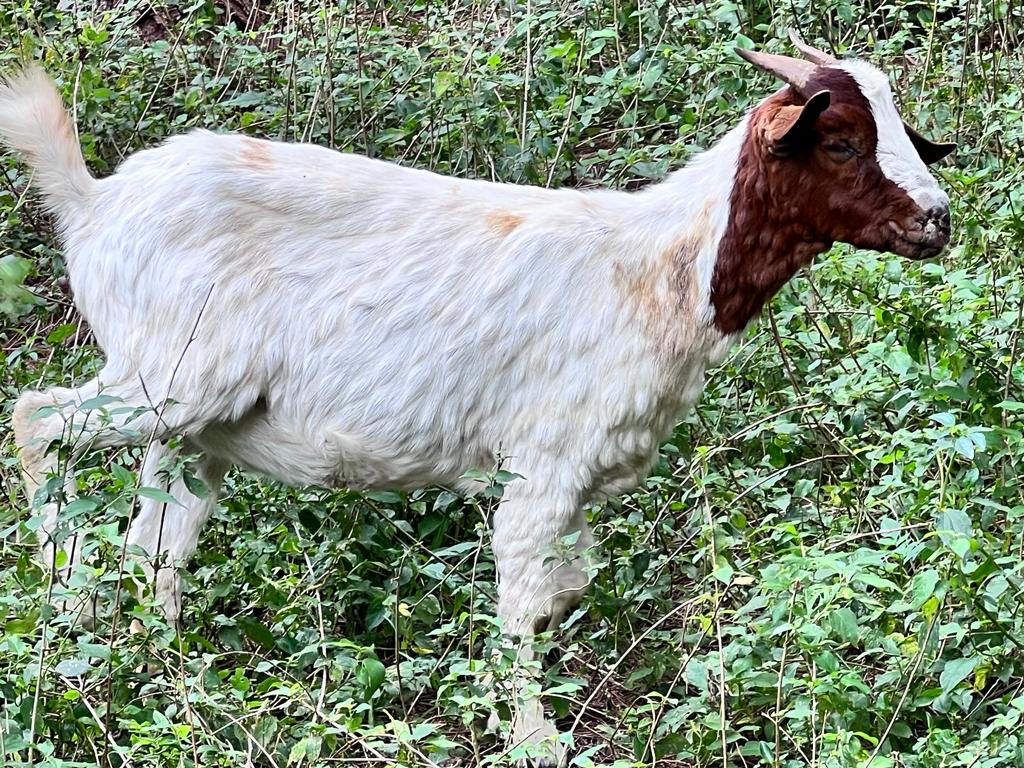
GOAT POX AND SHEEP POX
CAUSES, INCUBATION PERIOD, SIGNS, AND TREATMENT OF GOAT/SHEEP POX
History of goat pox and sheep pox: Goat and sheep pox are contagious, malignant notifiable pox diseases with a low mortality rate in adults and native animals. The disease is endemic but high prevalent among newly introduced animals and young ones.
Goat pox was first reported in Norway by Hansen in 1879. However, during the First World War, goat pox was noticed in Macedonia. In 1985, FAO declared capripox to be endemic in India, Middle East, Turkey, Pakistan, Bangladesh, some parts of China, north and central Africa.
Sheep pox was first reported in the first century AD, in 1931 in Bombay (India) and 1957 in Kenya.
COUNTRIES FREE OF GOAT POX AND SHEEP POX: Australia, Canada, Denmark, France, Ireland, Luxembourg, Poland, Sweden, USA, Austria, Finland, Hungary, Lithuania, New Zealand, Spain, UK, Chile, Estonia, Germany, Italy, Netherlands, Portugal, Switzerland, Belgium, Czech Republic. The list was generated in 2020 by Department of Agriculture, Water and the Environment Australian Government.
INCUBATION PERIOD OF SHEEP POX AND GOAT POX: Sheep pox: 4-8 days; goat pox: 4-14 days, with a maximum of 21 days. The variation observed in the incubation period for pox in goats and sheep is due to age, vaccination history, and other predisposing factors to the disease, as discussed below.
CAUSE / ETIOLOGY OF GOAT POX AND SHEEP POX: Goat pox and sheep pox are caused by the goat pox virus and sheep pox virus, respectively, which are closely related viruses of family Poxiviridae and Genus Capripox. Some strains affect both goats and sheep, while others are host-specific. Sheep pox virus and Goat pox virus are under subfamily Chordopoxivirinae, together with lumpy skin disease virus. Morphologically, clinically, and serologically, goat pox virus and sheep pox virus cannot be differentiated; they are oval in shape and approximately 294 x 273mm.
Goat pox virus and Sheep pox virus are distinguished based on genome, host, and incubation period.
DIFFERENCES BETWEEN SHEEP POX VIRUS AND GOAT POX VIRUS INCLUDE:
| Goat pox virus | Sheep pox virus |
| Affects mainly goats, except for a few strains | Affects mainly sheep, except for a few strains. |
| Longer incubation period (4-14days) | Shorter incubation period (4-8days) |
| Lack aspartic acid at the 55th position of p32. | Has aspartic acid at the 55th position of p32 |
| Lack a 21-nucleotide deletion in the RPO30 gene | Has a 21-nucleotide deletion in the RPO30 gene |
| Has six unique neutral nucleotides at positions 77, 275, 403, 552, 867, and 8964. | Lack the six unique neutral nucleotides at positions 77, 275, 403, 552, 867, and 8964. |
HOW IS GOAT POX VIRUS AND SHEEP POX VIRUS TRANSMITTED / HOW IS GOAT POX VIRUS AND SHEEP POX VIRUS GOT? – Sheep and goat pox viruses are spread to a susceptible animal either directly or indirectly via contact. These viruses are found in the saliva, milk, urine, feces, skin scabs, nasal and eye discharges of infected animals.
DIRECT WAYS/MODES OF GETTING GOAT POX OR SHEEP POX: In this form, the virus is transmitted straight from sick to susceptible animal(s) without aid from any object (both inanimate and animate). These include: inhalation of contaminated aerosols, contact between eroded skin and infected skin.
INDIRECT WAYS OR MODES OF SPREADING GOAT POX AND SHEEP POX: The susceptible animal picks up the virus from carriers, which can either be animate or inanimate objects, e.g., contaminated feeds, fomites, insects, and iatrogenically. In this form, there is no direct contact between the sick and susceptible animals.
The rate of transmission is reduced when papules become necrotic. Chronically infected carriers do not occur.
CLINICAL SIGNS OF GOAT POX OR SHEEP POX: The signs manifested vary depending on the severity of the disease. These include:
Increase in rectal temperature
Rhinitis
Conjunctivitis
Swollen lymph nodes
Congested mucous membranes
Laboured breathing
Anorexia
Skin scabs
Papules
Necrosis of the anal, buccal, and vaginal mucosa
Diarrhea
Emaciation
Rough hair coat
Alopecic skin patches
Lethargy
Excessive salivation.
PREDISPOSING FACTORS TO GOAT POX AND SHEEP POX;
Young age
Pregnancy
Underlying diseases
Stress
Introduction of new animals or breeds to endemic areas
Overstocking of animals
Poor sanitation that attracts flies.
PREVENTION/CONTROL OF GOAT POX AND SHEEP POX:
Routine vaccination of animals
Proper sanitation.
Use fly repellents.
Isolate sick animals.
Regularly spray aerial disinfectants in houses with infected animals.
Quarantine newly introduced animals.
Ensure proper stocking density.
Purchase animals and feeds from trusted sources.
Ensure proper disposal of carcasses.
Institute and follow strict biosecurity measures.
TREATMENT OF GOAT POX AND SHEEP POX: there is no etiological or specific treatment of sheep and goat pox. The remedies given are supportive and symptomatic, depending on the severity of the disease. Some medications given include:
Broad-spectrum antibiotics
Anti-inflammatories
Immune boosters
IV fluids like dextrose and ringers are administered if the animal is anorexic and dehydrated.
VACCINATION SCHEDULE OF GOAT POX AND SHEEP POX: All strains of capripox share a major neutralization site; therefore, a single-strain vaccine provides protection to all strains. The attenuated virus vaccine provides immunity for 2-3 years, but its risk of causing disease is usually high. Inactivated vaccines provide immunity for a shorter period of time but have a low risk of causing diseases.
The initial vaccination is given between 3 and 4 months. The booster dose can be given either after 6 months, annually, or after 2 years, depending on the manufacturer’s instructions.
PRECAUTIONS TO TAKE WHILE VACCINATING AGAINST GOAT POX AND SHEEP POX:
Give the right dose.
Use the correct route of administration.
Do not vaccinate unhealthy animals.
Pregnant and those below 2 months of age.
Ensure proper handling of the vaccine (maintain the recommended temperature).
The skin at the site of injection should be dry and clean.
Needles and syringes should be sterile, never recycled.
Use the manufacturer’s diluent for the freeze-dried vaccine.
In cases of allergic reactions, anti-inflammatories should be given.
DIFFERENTIAL DIAGNOSIS OF GOAT POX AND SHEEP POX ARE:
ppr
urticaria
orf
Pasteurellosis
Insect bites
Mange
Photosensitization
Caseous lymphadenitis
Blue tongue.
DIAGNOSIS OF GOAT POX AND SHEEP POX: Based on history (presence of current and previous outbreaks), clinical signs, post-mortem lesions, histopathology, and serology
POST- MORTEM LESIONS OF GOAT POX AND SHEEP POX:
Lumps on the skin
Alopecia
Papules
Macules
Skin scabs
Pneumonic lungs
Nodules on the GIT mucosa
Swollen lymph nodes
Conjunctivitis
Congested nasal mucosa, etc.
HISTOPATHOLOGICAL PRESENTATION OF GOAT POX AND SHEEP POX: Presence of Bollinger bodies with extensive inflammatory, necrotic, and proliferative changes.
SEROLOGICAL TESTS USED INCLUDE: ELISA, western blotting, indirect fluorescent antibody tests, and agar gel immune diffusion.
WHENEVER GOAT POX IS CONFIRMED OR SUSCPETED, CONCERNED AUTHORITIES SHOULD BE INFORMED.
SEEK MORE INFORMATION FROM NEARBY VETERINARY CLINIC OR PROFESSIONAL.
